Matador Network's Blog, page 1145
March 11, 2019
Get paid to travel the world
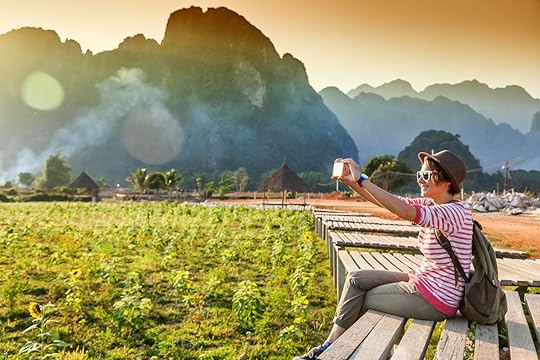
If you’re looking to cross a ton of unforgettable destinations and experiences off your bucket list, this opportunity from Busabout is probably the most efficient way to do it. The travel company is looking for six individuals to travel with it this year, share their experience on their social channels, and get paid for it.
The program is billed as an “experiment” designed to prove that being flexible and spontaneous leads to better travel experiences. And no, the company is not joking when it uses the word “spontaneous”; Your travel experiences will be determined on the fly by votes from Busabout’s 49,000 Instagram followers.
Everything from the type of food you eat to adventurous excursions will be decided for you. To compensate for your lack of free will, all expenses will be fully covered, and you’ll get a bi-weekly payment.
The company needs six content creators — three Instagram pros and three videographers — who are adept at creatively telling a story through social media. It will also accept applications in teams of two, which consist of one Instagram content creator and one videographer.
There are three trips, six to 11 weeks long, with a pair of winners assigned to each. These include a coast-to-coast road trip of the US (6 weeks), a tour of Southeast Asia (6 weeks), and a European adventure (11 weeks).
To apply, fill out the application and upload a creative 60-second YouTube video showcasing your hometown. Include the Great Travel Experiment logo in your thumbnail, and use the hashtags #travelexperiment and #busabout in your description. For bonus points, it asks applicants to post this image on Instagram and write about a destination they’re excited to explore. 

More like this: This hilarious Instagram account shows how unoriginal travel influencer photos are
The post This job will pay you to travel the world, but your plans will be determined by social media users appeared first on Matador Network.

Lyft giving away free rides in March

For Women’s History Month, Lyft is honoring the contributions of women in a big way. The ride-sharing company will be offering free rides up to $10 to locations associated with women’s history, such as monuments, museums, and female-owned businesses throughout the month of March.
Each rider can only use the free ride once, however, and to very specific locations. The promotion is available in 37 cities across the US and Canada, and each city has its own unique discount code which needs to be entered into the app.
Washington, DC promo code: WHMDCA19
Baltimore, MD promo code: WHMBWI19
Boston, MA promo code: WHMBOS19
Charleston, SC promo code: WHMCHS19
Chicago, IL promo code: WHMCHI19
Cleveland, OH promo code: WHMCLE19
Cincinnati, OH promo code: WHMCVG19
Columbus, OH promo code: WHMCMH19
Denver, CO promo code: WHMDEN19
Dallas, TX promo code: WHMDFW2019
Greenville, SC promo code: WHMGSP19
Hawaii promo code: WHMHNL19
Houston, TX promo code: WHMIAH19
Indianapolis, IN promo code: WHMINDY19
Las Vegas, NV promo code: WHMLAS19
Lexington, KY promo code: WHMLEX19
Los Angeles, CA promo code: WHMLAX19
Memphis, TN promo code: WHMMEM19
Miami, FL promo code: WHMMIA19
Minneapolis, MN promo code: WHMMSP19
Montgomery, AL promo code: WHMMGM19
Nashville, TN promo code: WHMBNA19
New Jersey promo code: WHMNJ19
New York City, NY promo code: WHMNYC19
Oakland, CA promo code: WHMOAK19
Orlando, FL promo code: WHMMCO19
Philadelphia, PA promo code: WHMPHI19
Phoenix, AZ promo code: WHMPHX19
Pittsburgh, PA promo code: WHMPIT19
Raleigh–Durham, NC promo code: WHMRDU19
Saint Louis, MO promo code: WHMSTL19
San Diego, CA promo code: WHMSAN19
San Francisco, CA promo code: WHMSFO19
San Jose, CA promo code: WHMSJC19
Tampa, FL promo code: WHMTPA19
Tucson, AZ promo code: WHMTUS19
Toronto, Ontario promo code: IWD2019TO
The valid destinations within each city can be found on Lyft’s blog post announcing the event. Examples of destinations included in the deal are the Women’s Museum of California in San Diego, the Harriet Tubman Memorial in New York City, the Chicago History Museum, and 4J Brewing Company in Houston among many others.
Lyft’s goal with this promotion is to encourage riders to “learn important lessons from the women who’ve made their mark in history,” and recognize that “so many of them are just everyday people.” Ultimately, by making these locations more accessible, they want people to feel empowered to go out and create change themselves.
You can still take advantage of the deal if your ride ends up costing more than $10, but keep in mind that you will be responsible for paying the difference. 
H/T: Thrillist

More like this: 7 things you need to know about the woman who travels solo
The post Lyft is taking you to museums and women-owned businesses for free this March appeared first on Matador Network.

Selfie-taking woman attacked

Big cats look beautiful and soft, but they certainly should not be treated like domestic kitties, even if they are kept in a zoo. On Saturday, a woman, who seemed to have forgotten that jaguars are dangerous predators, was at the Wildlife World Zoo in Litchfield Park, Arizona, when she was attacked by a female black jaguar while attempting to take a selfie with the animal. She had stepped over a barrier into the big cat’s enclosure, when it swiped through the fencing and left deep gashes on her arms.
Adam Wilkerson, a witness who captured the aftermath of the incident on video, told Fox News that he saw the woman “up against the fence with her arm caught in the jaguar’s claws.” He added that in an attempt to help, his mother grabbed her water bottle and threw it into the jaguar’s cage to distract it. “When my mom put the water bottle through the gate,” he said, “the jaguar let go of the girl. And we pulled the girl back and she collapsed.”
A Phoenix woman suffers from injuries after a black jaguar swiped at her while she was taking a selfie. @TVMarci has the story. https://t.co/1ruDM6Q9U3 pic.twitter.com/80ksjVYNMu
— Good Morning America (@GMA) March 10, 2019
According to Good Morning America, the woman returned to the zoo after the attack and admitted she was at fault.
Although paramedics were called, the woman’s injuries were not life-threatening. The jaguar will not be put down as a result of the attack. 
H/T: BBC

More like this: The world’s 7 big cats and where to see them in the wild
The post Zoo jaguar attacks woman after she crossed barrier for a selfie appeared first on Matador Network.

Things Wisconsinites do better

While Wisconsinites are great at being humble, we’re also quick at pointing out that we are just better than the rest of the country at some things. We don’t mean to be cocky, but here are 10 abilities, aside from our standout humility, that Wisconsinites are better at than the rest of the United States.
1. Withstanding the cold
A skill born of necessity, the ability to live in a place where winter can last for six months and actually enjoy it is one of our greatest talents. We’ve mastered knowing how many layers to wear for any temperature, and we are experts in great winter activities like ice fishing, snowmobiling, and walking to the nearest pub at record speeds, despite being so bundled up that we can hardly bend our limbs.
2. A high tolerance to booze
Wisconsinites have a seemingly innate tolerance for high quantities of alcohol, probably because everything feels warmer after a drink. Or maybe it’s because the rest of the country is relying on us to keep on fighting for the first spot in the ranking for the US state that drinks the most alcohol (we’re currently second behind North Dakota).
3. Crafting cheese
We’re known as America’s Dairyland for a reason. Not only do we craft the best cheddars and mozzarellas in the country, but we’ve also invented cheese curds. To the rest of the US: You’re welcome.
4. Supporting our sports teams
If wearing a foam block of cheese on your head isn’t fandom for your sports team, then I don’t know what is.
5. Brewing local beer
With more than 200 breweries across the state, there’s no denying our affinity for recipes of barley, hops, and water. And given the number of people who drive in from other states to pick up their favorite only-in-Wisconsin brews, it’s safe to say we’re really good at it.
6. Cooking brats
We all know that the most important step is boiling the brat in beer before putting it on the grill. Yes, we can taste the difference. No, hot dogs don’t count.
7. Driving in the snow
We’ve had ample opportunity to practice this one, and as a result, we’re our out-of-state friends’ first choice to drive when we need to get somewhere in a snowstorm. We might slide into the ditch occasionally, but there’s always someone with a truck and tow strap joyriding in the snow and ready to pull us out.
8. Embracing our quirks
I dare you to find something quirkier than House on the Rock or Dr. Evermore’s Forevertron. We know they’re weird, and we make no attempt to hide it.
9. Relaxing on the lake
Move over Minnesotans. We have at least 5,000 more lakes than you, and, therefore, that means many more opportunities to fish, swim, kayak, and sail, usually with a cooler of ice-cold beer.
10. Being Midwest nice
We’ll buy coffee for the person behind us in line, and we’ll always help a confused-looking visitor find their way. Even more likely, we’ll even invite them over for brats and burgers later that day. 

More like this: 10 things Wisconsinites love to hate
The post 10 things Wisconsin does better than the rest of the US appeared first on Matador Network.

Babylonian treasure smuggling
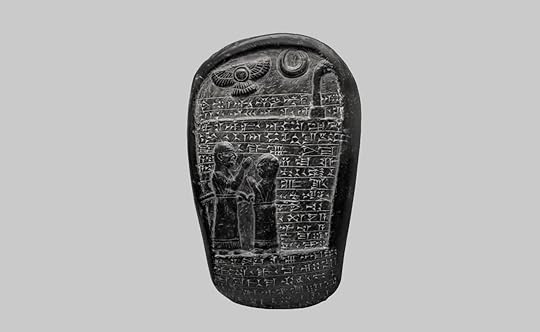
People try to sneak all kinds of obscure things through borders (including live turtles and leopard cubs), but this one might just take the cake. A Babylonian treasure, looted from Iraq and valued at hundreds of thousands of dollars, was recently confiscated by security at London’s Heathrow Airport.
A border agent became suspicious when a cargo was declared to contain a “carved stone for home decoration” allegedly made in Turkey, and valued at “300” without any mention of currency.
After researching the object online, the border officer discovered that the British Museum had a rare example of Babylonian kudurru, which this stone closely resembled. Kudurru were official documents carved in stones, by order of the Babylonian king. The officer contacted the museum, which confirmed that the stone dates back to the reign of Babylonian king Nebuchadnezzar I (about 1126-1103 BC), and really had no business being in someone’s airport luggage.
The black limestone piece, carved with cuneiform writing is about 11 inches high and dates back to the second millennium BC.

An example of Babylonian stone with cuneiform writing. The stone displayed here is not the stone found at Heathrow Airport. For a picture of the actual artifact seized, check out The Guardian.
(Photo: Kamira/Shutterstock)
Dr. St John Simpson, a senior curator at the British Museum, told The Guardian, “It’s a museum-quality piece. Even though it’s broken, it should still be on display in a museum.” And soon, it will be. The museum will stage the object’s official handover back to Iraq via the Iraqi embassy in London on March 19. Of this particular kudurru, Simpson said it had been “neither previously recorded nor published and must therefore come from illicit digging at a site in southern Iraq.”
The Kudurru will later be displayed in the newly restored Iraq Museum in Baghdad. 
H/T: The Guardian

More like this: 9 amazing things airport dogs can do
The post Looted Babylonian treasure confiscated at London Heathrow appeared first on Matador Network.

March 8, 2019
Barbie hotel room Mexico City

If Barbie were real, is there any question if she’d be an Instagram influencer? She absolutely would be. And though somehow Mattel hasn’t put out Influencer Barbie just yet, a new hotel suite in Mexico gets us pretty close.
Starting this week and running through December, the Hilton Mexico City Santa Fe is offering guests a chance to spend the night in its pink-tacular Barbie Glamping Experience, a customized suite that duplicates the great outdoors as only a woman made of plastic can.
“Glamping is a fusion of glamour and camping,” Andres Korngold, general manager of Hilton Mexico City Santa Fe, explained for people still trying to figure out what they meant by Brangelina. “Barbie loves to travel, enjoys nature and cares about the environment, without forgoing the comfort of the most sophisticated accommodations.”
No word on if Korngold had a previous career as an influencer agent.

Photo: Hilton Mexico City Santa Fe
Inside the room you’ll find artificial turf on the ground, a toy wood “campfire,” and vinyl leaves draped from the ceiling. They hang over a life-size Barbie camper — a pair of plush bunks done up in pink with throw pillows and Barbie’s signature on the side.
The sea of pink continues in the bathroom, where pink bath mats and Barbie stickers on the mirror are accompanied by amenities from Colgate and Avon. The suite will also include toys for kids and a collection of vintage Barbies spanning her 60-year career.

Photo: Hilton Mexico City Santa Fe
The Barbie party doesn’t stop inside the suite, though. MADERA, the Hilton’s restaurant, is offering a special pink menu in honor of Barbie’s 60th anniversary. It’ll include Instagram-friendly offerings such as heart-shaped pizzas and gnocchi in pink sauce, as well as red velvet treats and strawberry ice cream. The lobby will have a giant pink shoe from which to take copious selfies, as well as Barbie-themed artwork on the walls.
Despite the glamorous amenities, the Barbie Room Experience will start at a fairly reasonable $189 per night on weekdays and $229 a night on weekends. It’s currently open for bookings. 

More like this: Mexico’s swankiest swingers resort is opening an ‘adult mansion’ later this year
The post This hotel in Mexico just launched a Barbie glamping room, Instagram influencers appeared first on Matador Network.

Everything you need know to hike NZ

For the first time in 25 years, the New Zealand’s Department of Conservation has added a new trail to its list of Great Walks. Set on the west coast of the South Island, Paparoa Track, and its included shorter Pike 29 Memorial Track, stretch 34 miles in one direction across renowned New Zealand landscape. When it’s fully open in October 2019, this multi-day hike through lush rainforests and mountainsides will afford incredible views of the Tasman Sea and the Southern Alps. Here’s what you need to know.
About the track
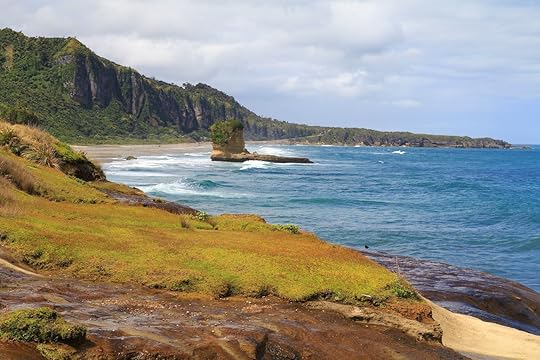
Photo: Andy Tan Hong Wei/Shutterstock
New Zealand’s list of Great Walks are a collection of the best trails in the country offering the most premier scenery. All of these tracks are maintained by the Department of Conservation and have landscapes that range from sandy coastlines to dense rainforests.
Until now, Paparoa National Park, where the trail is located, has only been accessible to the most robust of hikers. This new Great Walk was created with careful planning and with the hope that it might boost tourism in the area. This is very important to the people in towns surrounding the Paparoa Track, since their main economic industry, mining, is dying.
In fact, the shorter trail on the track, the Pike 29 Memorial Track, is named for the 29 men killed in the Pike River Mine tragedy of 2010. The mine site and area surrounding it have been officially included in Paparoa National Park at the request of those men’s families.
Featuring karst limestone, dense forests, and stunning mountain peaks, the Paparoa Track is a great representation of what one of the most scenic countries in the world has to offer its nature-loving visitors. The multiple-day trail will serve both mountain bikers and hikers.
For those conquering the trail on foot, it will be a two-to-three day journey. By mountain bike, the trail takes between one and two days. The trail is one-way with plenty of signage, making it impossible to get lost. The first day of the trail leads hikers steadily uphill, but the remaining two days of the trek — after the mountain crests — are flat or gently downhill.
What makes the Paparoa Track special
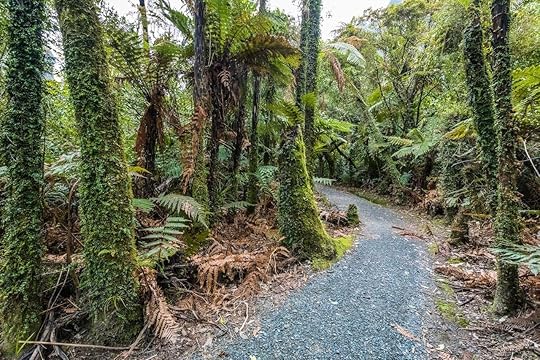
Photo: Martin Valigursky/Shutterstock
Every Great Walk, like the Milford Track and the Tongariro Crossing, offers impressive scenery throughout the trek. The Paparoa Track is no exception. The landscape over the two or three days of your hike will vary widely — from thick canopy coverage in the rainforest to coastlines with views of the open ocean.
Not only is the Paparoa Track the first new addition to New Zealand’s list of Great Walks in over two decades, it’s also a conscious effort to both remember and move on from the tragedy of the Pike 29 mine disaster. Families of the 29 men killed in the mining tragedy came up with the idea for a new walking trail. Together with the Department of Conservation, they decided to honor the history of the surrounding mining communities by including pieces of that history along the trek.
How to get there

Photo: Milosz Maslanka/Shutterstock
The start of the Paparoa Track lies at Smoke-ho parking lot. The car park is located at the end of Blackball Road. The Paparoa Track goes one way, so hikers have to organize transport to the trailhead and from the trail’s endpoint. Alternatively, you can organize car service to transfer your car to the end of the trail while you are hiking. The nearest towns to the Paparoa Track are Blackball, Punakaiki, and Greymouth.
You can find a transport shuttle to the trailhead from each of these towns, from companies like West Coast Wilderness Trail. They also rent mountain bikes. At the end of the trail are two parking areas, the Pororari River Track and the Waikori Road lots. Both are located on State Highway 6, near the famous Punakaiki Pancake Rocks.
What gear to pack and wear

Photo: Naruedom Yaempongsa/Shutterstock
Since the Paparoa Track is a two-to-three day hike, it requires more thought when packing up your gear than single-day hikes. For a multiple-day hike, a 40-60 liter backpack should be able to hold all the gear you need for the trek. If the 40-60 liter backpack seems too small, you’re probably bringing too much. Don’t forget a first aid kit in case of any accidents, and a sleeping bag that’s right for the season of your hike.
Be sure to bring a water bottle, matches or lighter in a waterproof container, toiletries, flashlight, trash bag, ticket, ID to use the huts and shuttle services, camera, sun protection (hat, sunscreen, sunglasses, etc), and easy-to-carry foods and snacks.
New Zealand weather is infamous for changing frequently, so you’re likely to experience a variety of weather conditions on your hike. The trail’s terrain requires sturdy hiking boots, which you’ll want to wear with wool socks to prevent any blistering on the track. A cap and sunglasses are essential, and in the colder months, you’ll need a thermal hat and gloves. Pack extra underwear and socks, as well as hiking pants/shorts, a waterproof raincoat, waterproof pants, and layers appropriate for the season.
What to expect on the track
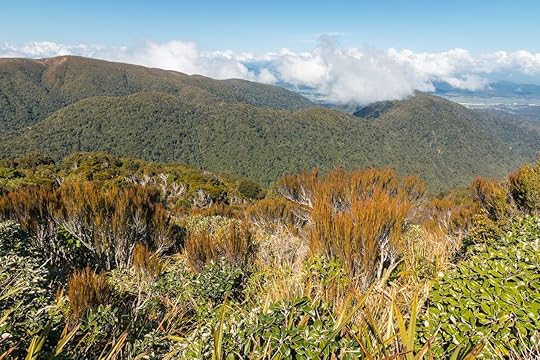
Photo: patjo/Shutterstock
Hikers expecting to complete the full Paparoa Track in three days should plan for a long first and second day, with a shorter final day. The first day is spent climbing steadily uphill for about 12.5 miles, or 6-8 hours, hiking from Smoke-ho car park to Moonlight Tops Hut.
The second day takes an estimated five to seven hours and covers a little less than 12 miles, though the majority of the trail this day is slightly downhill. You’ll finish the second day at the Pororari Hut, where you can grab some shut eye for the final day. Your last day on the track takes roughly five hours to complete, ending at the Pororari River car park.
If you only have two days to trek, your first day will your first day will be the same as the Paparoa Track. After the Moonlight Tops Hut, you can take the Pike 29 Memorial Track option the next morning. The Memorial Track still has a variety of lookouts and forest scenery, but ends at the Memorial Interpretation Centre, a new site dedicated to the 29 men killed in the mine disaster. You’ll cover nearly 8.5 miles that day and should finish in five to six hours.
Where to stay on the track
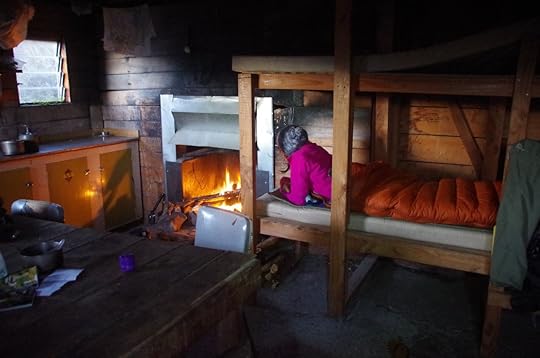
Photo: 4 season backpacking/Shutterstock
Huts will be set up for hikers when the Paparoa Track opens fully in October 2019. You should book the the Pororari Hut and the Moonlight Tops Hut in advance through the Department of Conservation website. These two huts will have gas cooktops, toilets, water supplies, mattresses, and heating.
Otherwise, you can also camp at a designated campsite, which must be booked ahead of time. A third hut exists along the Paparoa Track that is not an official “Great Walk hut.” It will offer bunks for 16 people and won’t need to be booked in advance. There is an honesty system in place where it is expected that you leave your “bunk fee” of 15 New Zealand dollars in the honesty box at the hut. 

More like this: Everything you need to know about New Zealand’s Great Walks
The post The Paparoa Track is New Zealand’s newest Great Walk, and it’s spectacular appeared first on Matador Network.

What happens if misspell your name

There are a lot of details to pay attention to when you’re filling out the information on your flight booking. Billing address, credit card number, departure dates, seat assignments, dietary restrictions, etc. Typing your own name might be the least of your concerns, but it’s one of the toughest and most expensive errors to correct. This Twitter user posted about an incident involving his friend, who misspelled his own name on a Ryanair booking and was then asked to pay $130 to fix it.
Mate has been arguing with Ryanair all day because autocorrect changed his name from Luke to Lukewarm on their app and they want €115 to do a name change on the flight haha
— Conor (@conjob123) March 7, 2019
Allegedly, autocorrect changed the name from “Luke” to “Lukewarm” and the passenger didn’t notice until the booking was complete. Then, when he tried to correct the seemingly minute error, Ryanair asked for a fairly exorbitant fee. This is consistent with most airlines’ policies, which rarely allow name changes on basic fares, or if you’ve already checked in online. Correcting the name is essential, however, as you will not be allowed to board the plane if you show up at the airport with a name on your ticket that does not match your passport.
Luke may have been able to avoid this issue had he signed up for the Ryanair Choice program. The frequent-flyer program gives Ryanair travelers added benefits like free seat selection, priority boarding, and a 48-hour grace period to make changes to your booking — including your name.
Unfortunately, if you don’t belong to Ryanair Choice or a similar loyalty program, and you misspell your own name on your booking, you’ll likely have to bite the bullet and pay the fee. 
H/T: Twitter

More like this: Here’s when you should book airfare directly through the airline
The post appeared first on Matador Network.

Best Easter egg designs

Bunnies with baskets full of rainbow-colored creations, chocolate treats wrapped in shiny foil, hand-dyed eggs hidden in the backyard to be hunted; nothing says Easter like Easter eggs. While the only objective for dying eggs in the United States is for them to be as bright and colorful as possible, other Easter egg designs from around the world are rooted in religious beliefs and cultural traditions. Painted or dyed, wrapped in wire or plastered in paper, these eight classic designs are the perfect inspiration for this year’s egg-decorating party.
1. Kokkina avga, Greece

Photo: Gts/Shutterstock
Easter is all about pastels in the US, but Greece does it totally differently. Rather than soft, sweet colors, Easter eggs are dyed a dark, striking red in accordance with Greek Orthodox tradition. While the exact reason for the red dye is unknown, the most common theory suggests that the color represents Christ’s blood at the time of his crucifixion. An even more involved explanation likens the eggshell to Christ’s tomb and the cracking of the egg to his resurrection. Kokkina avga (the red-dyed hard boiled eggs) often decorate the traditional Greek Easter sweet bread known as tsoureki.
2. Kraslice eggs, Czech Republic

Photo: WhiteHaven/Shutterstock
These ornate Czech Easter eggs are hand decorated using a combination of dyes and wax. Wax is applied to the shell and peeled off after the egg is dipped in dye to create the desired pattern. There are often several dyeing stages using various shades to add nuance. Geometric and floral patterns are popular, as are religious symbols, though the practice predates Christianity and has roots in paganism. Another traditional technique is to wrap neatly latticed wire around hollowed out eggs, sometimes using beads for extra flair. But when it comes to decorating at home, wax and dye are the go-tos for Czech families.
3. Pysanky, Ukraine

Photo: Andriana Syvanych/Shutterstock
Ukrainians use a wax-resist batik method to decorate their iconic Easter eggs, called pysanky. Pysanky are known for having bright, bold, geometric, or floral patterns offset by black or dark backgrounds, a color scheme that sets them apart from other Easter egg designs from the area. Although the exact origin is unknown, decorated eggs are an old tradition and excellent example of Ukrainian folk art. In fact, there’s even a museum dedicated to them in Kolomyia, Ukraine.
4. Vekonocne vajicko, Slovenia

Photo: 5PH/Shutterstock
Slovenia’s the place to celebrate Easter for anyone against food coloring. The traditional Slovenian method of dying Easter eggs entails securing plant sprigs or flowers to an egg with a tin net (cut up pantyhose work very well) then boiling them with onion skins, yielding an earthy red Easter egg with a floral motif. Dye is common in Slovenia today for a quicker, more colorful bounty, but many households still participate in the all-natural dyeing practice that makes Slovenian Easter eggs so special.
5. Osterei, Germany

Photo: vitaprague/Shutterstock
German Easter egg traditions date back longer than the US has existed. Egg dyeing and egg hunting are common, but Germany takes the festivities up a notch with egg races to see whose egg rolls fastest down a hill and egg smashing to see whose holds up and whose cracks. Eggs are also handed out as Easter gifts, sometimes like a Valentine from a kid to their crush, and Easter trees (or osterbaum) decorated with ornate eggs are a common sight. Like the Ukrainians, the Germans are so into their Easter eggs there’s a whole museum dedicated to showcasing their designs outside Stuttgart known as the Osteri Museum.
6. Washi eggs, Japan
View this post on InstagramA post shared by klein&fine (@kleinandfine) on Mar 21, 2017 at 9:40pm PDT
Japanese Easter eggs are made using paper rather than dye. Washi paper is a fibrous, traditionally hand-processed material used for everything from origami to prints to clothing. During Easter, eggs are hollowed out, wrapped in folded washi paper, then covered in varnish. Washi paper typically features colorful, intricate designs and often incorporates flowers, birds, and other traditional Japanese imagery, lending to beautifully detailed Easter ornaments.
7. Cascarones, Mexico
View this post on InstagramA post shared by Michi Anilom (@michianilom) on Mar 5, 2019 at 10:51am PST
Cascarones are hollowed out eggs stuffed with confetti or small toys like mini pinatas. They’re a staple of Mexico’s Carnival celebration but also standard during Easter, particularly near the US-Mexico border. Eggs are dyed dazzling colors before being emptied, and colored tissue paper is generally plastered over the hole made for hollowing. Cascarones have a long history that travels from Asia to Europe to North America, but today, they’re Mexican icons. It’s customary to crack confetti-filled cascarones over other people’s heads for good luck.
8. Fabergé eggs, Russia

Photo: Музей Фаберже I Fabergé Museum/Facebook
Fabergré eggs look more like crown jewels than arts-and-crafts projects. Tsar Alexander III commissioned the first from Peter Fabergé as an Easter gift for his wife Maria. Fifty eggs were created for the Russian royal family in total between 1885 and 1916, aptly called the Imperial Eggs, each an enameled marvel uniquely bejeweled with diamonds and semi-precious stones. You probably won’t be able to recreate this design at your kitchen table, but you can head to the Fabergé Museum in St. Petersburg to see the magnificent collection of those eggs. 

More like this: The 5 best places to celebrate Holi outside of India
The post 8 stunning Easter egg traditions around the world appeared first on Matador Network.

St. Lucia free flights

Today is International Women’s Day, and Virgin Holidays is celebrating by giving away free flights to St. Lucia, the only country in the world to be named after a woman. The catch is — your name must be either Lucy or Lucia. The travel company is offering four pairs of round-trip Virgin Atlantic tickets from London’s Gatwick Airport to St. Lucia. To qualify, you just need to have the right name on your passport.
Three Virgin Holidays consultants named Lucy went to St. Lucia in advance of the contest to scout out the island, which is known for its mountain landscapes and beaches. Lucy Hudson, one of the contestants, told , “Saint Lucia is such an incredible country with beautiful scenery and beautiful people.”
Joe Thompson, managing director of Virgin Holidays, added, “We wanted to celebrate St. Lucia’s place in the world — the one country named after a woman — by empowering St. Lucie’s namesakes, Lucys and Lucias across the UK, with the opportunity to visit this tropical island paradise.”
To take advantage of this unique promotion, you must enter via the Virgin Holidays website between March 7 and March 11. The four Lucys (or Lucia’s) will be chosen at random. 
H/T:

More like this: 7 things you need to know about the woman who travels solo
The post Women with this name can fly to St. Lucia for free appeared first on Matador Network.

Matador Network's Blog
- Matador Network's profile
- 6 followers



